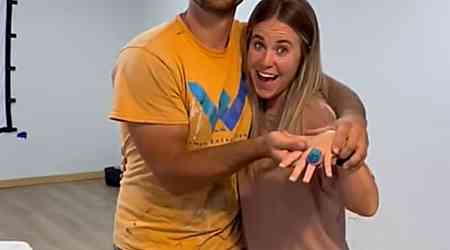Depending on who you ask, ultrarunning — races far longer than a marathon 26.2 miles that can span multiple days — is an activity for the most fearless, dedicated, adventurous, or insane runners in the world. It's a grueling test of endurance and will, and with its long distances, treacherous terrain and varied climates, the athletes that tackle these monster marathons have incredibly specific performance needs.
Enter Mount to Coast, a new running shoe brand founded by a group of running industry veterans that had its full market launch earlier this year. Its mission? Create a shoe tuned to meet the needs of ultramarathon athletes, using technical specifications that meet the anatomical demands of multi-day races. "Mainstream shoe brands have overlooked the specific performance needs of ultrarunners," says Yeti Zhang, Mount to Coast's head of product, who, before joining the company, spent almost six years at Nike and more than a dozen at Brooks. "In today's market, running shoes are highly homogeneous with features like carbon plates and thick soles and highly prioritize trend and aesthetics."
To achieve this goal, the Mount to Coast team worked with some of the world's finest ultrarunners to identify and rectify the core problems they faced. This extensive wear testing resulted in two main points of feedback. The first was that most shoes weren't durable enough to withstand a full ultramarathon without their cushioning "bottoming out," or losing its pop and responsiveness. "Most running shoes in the current market don't provide consistent cushion and response for ultra distance running, and ultra runners often experience midsole breakdown, meaning they'll need multiple pairs of shoes for big races," Zhang notes. The second was that the shoes' fit was not adaptable enough, as a runner's foot often swells significantly over the course of an ultramarathon: "Often, you’ll see ultrarunners cut the upper for more room or wear shoes a few sizes too large to accommodate for swelling, both of which put them at greater risk of injury," Zhang mentioned.


Mount To Coast's biggest test to date was the MTC JOGLE 2024, a 17-day, 854-mile ultramarathon in Great Britan where runner Justin Montague, wearing a single pair of Mount to Coast's R1 model, shattered every course record, proof of concept for the brand that led to its market launch.
In April, Mount to Coast released its R1 and S1 models (seen in the above gallery), the former a road racing shoe with quickly-adjustable laces that can adapt to a runner as their feet expand and the latter a durable long-distance trainer geared towards a comfortable ride and injury prevention. Both models quickly garnered acclaim among the running community for their combination of technical materials (like a proprietary midsole foam dubbed ZeroSag that the company says is 10 times more durable than traditional EVA foam) and minimalistic color schemes inspired by Zen Buddhist philosophy.
Now, the R1 and S1 are set to be joined by Mount to Coast's third model, the stability-focused P1. Where most stability shoes focus on securing the wearer's heel to avoid overpronation or supination, the P1 combats stride inefficiencies with a technology dubbed 3D Archrail that guides the wearer's forefoot while providing a light, flexible fit that's not commonly associated with support-focused models.
Ahead of the P1's launch, Yeti Zhang discussed Mount to Coast's origins, philosophy, the unique perspective it sees the running footwear market from and more.




What was the impetus for launching Mount to Coast? Was there a gap you saw in the running shoe industry, and if so, how does the brand fill it?
Although participation in running is growing tremendously, the ultrarunning community remains a niche segment, and since the sport is not recognized as an Olympic discipline, its commercial appeal remains extremely limited. As a result, mainstream shoe brands have overlooked the specific performance needs of ultrarunners. In today's market, running shoes are highly homogeneous (with features like carbon plates and thick soles) with a high prioritization on trend and aesthetics.
Mount to Coast was born for the endurance running community, supporting ultrarunners with tailor-made technology for long-distance pursuits. Our designs represent a return to the essence of the sport, focusing on health, longevity and distance.
How did the brand and its products come from concept to fully-realized idea?
A few years ago, we had the privilege of meeting Lucong Geng, a legendary ultrarunner who set the record for the 1,000-mile ultramarathon in 2022. Through our in-depth conversations, I gained insight into the unique challenges he faces — challenges that current products on the market fail to address.
First among these was midsole durability. Most running shoes in the current market don't provide consistent cushion and response for ultra distance running, and ultra runners often experience midsole breakdown, meaning they'll need multiple pairs of shoes for big races. To solve that, we teamed up with BASF to develop ZeroSag, an innovative shock-absorbing material originally used in racing car suspensions. ZeroSag boasts up to 10 times the durability of traditional EVA midsoles The second main problem was that the fit of most shoes' uppers weren't dynamic enough, as found that runners' feet swell significantly in multi-day running events. Often, you’ll see ultrarunners cut the upper for more room or wear shoes a few sizes too large to accommodate for swelling, both of which put them at greater risk of injury. For the upper, the R1 features a roomy forefoot area and a dual lacing system, enabling runners to adjust the fit around both the forefoot and rearfoot independently. As a footwear industry veteran, I believe ultrarunners deserve a shoe option that will not compromise their performance or safety.
How much testing did the shoes undergo before release?
A lot, but the ultimate test came during the MTC JOGLE 2024, a grueling 17-day ultramarathon across Great Britain, where Justin Montague shattered all records, completing the entire 854 miles in a single pair of Mount to Coast R1. This success confirmed our shoes' problem-solving capabilities, and prompted our market launch.
"While our primary purpose is to support ultrarunners, we understand that 'long-distance running' is a subjective term."
How can shoes that were designed for a niche segment of ultra-endurance athletes adapt to meet the needs of a more casual runner?
While our primary purpose is to support ultrarunners, we understand that “long-distance running” is a subjective term. For some, a half marathon is a long distance effort and logging 300 miles in a year represents endurance. Whatever the distance, Mount to Coast’s shoes are built to support the human body in confident, comfortable, injury-free running.
The brand’s design ethos is the use of minimalist or monochromatic color schemes to “not distract users.” How did you come to that ethos? Do you feel it spotlights both the shoe’s athletic and aesthetic qualities?
The ethos behind our minimalist approach is inspired by Zen Buddhism and the 2,000-year history of East Asian landscape painting. The practice requires artists to use only ink and rice paper, capturing the essence of the scenery with the simplest lines, reflecting the artist's spiritual realm. This pursuit reflects our goal: to honor the spirit of ultramarathon running with intentional simplicity which allows for greater expression of the athlete themselves. Our design philosophy prioritizes performance over fashion or trendiness. We've removed design elements that don't contribute to functionality, resulting in a shoe that is aesthetically lightweight and centered on execution rather than fashion. [Editor's Note: This question was answered by Chan Li, Mount to Coast's head of design.]


Where does the new P1 silhouette fit in the Mount to Coast universe? In the past, stability shoes, though necessary for some types of foot types and strides, have not been viewed as “fun” or “fast.” How does the P1 combat that?
Drawing from research conducted at the Mount to Coast Run Research Lab, we've redefined what stability shoes can do, with the goal of reducing the risk of running injuries. Unlike most traditional stability shoes that focus on limiting heel eversion, the P1 introduces revolutionary forefoot support technology in our 3D Archrail. This innovation makes the P1 lighter, more flexible, and more enjoyable to wear than most stability shoes on the market, making it suitable for a wide range of runners—except for those chasing their PBs.
What do R1, S1 and P1 stand for?
We aim for our shoe names to be simple and easy to remember, rather than giving them deep or complex meanings. “R” represents “raceday”, “S” is for “soul runner”, and “P” signifies “protection.” Eventually “T” will be introduced into product naming as we enter the trail space in 2025. My hope is that after we've released multiple generations of products, users will ultimately define what those letters truly represent based on their own impressions of the shoes.
The shoes say “When I run, I am just running” on the insole and some of the packaging. Where did that quote come from and what does it mean to you/the brand?
This statement is inspired by Zen philosophy. We hope it reminds runners to enjoy the process of running rather than focusing on the results. As we readied ourselves to launch into a highly competitive shoe market, our team was often guided by the idea of “when I run, I am just running.” The mantra helped our team to stay engaged with the process and do our best in every moment. We are extremely proud of where we are as a young brand and we’ll continue to find motivation through the running community.
"I believe people inherently crave diverse expressions, which is why emerging running brands are so welcomed."
The running world seems to be more welcoming to small, upstart brands than ever before. Why do you think that is, and what’s the biggest change you’ve seen in the running footwear industry since you’ve been involved in it?
I believe people inherently crave diverse expressions, which is why emerging running brands are so welcomed. New brands not only bring fresh products, but also different understandings and even philosophical perspectives on running that resonate with broader audiences and demographics. Compared to larger, long-established brands, new companies like ours are more agile and more focused. At Mount to Coast, our team members and partnered athletes can contribute suggestions and once accepted, these changes can be quickly implemented. This level of responsiveness, especially in the product development process, is unimaginable in large corporations.
What have you guys learned since the first drop and how will those learnings be reflected in the future?
Above all else, we’ve learned product is king. Without having the budget of legacy brands to implement huge marketing campaigns, we have still earned positive recognition from athletes, industry experts and running journalists because we have placed so much emphasis and capital on creating world-class shoes. Every new brand will eventually become an "old brand" and lose its novelty — that's something we can't control. What we can control is making innovative and unique shoes that continually meet the needs of our audience. We know, beyond PR efforts or flashy marketing, the performance of our shoes is ultimately the lifeblood of our brand.
What’s something people don’t know about the brand that you think they should?
Even though we are a new brand, we have a core innovation team of industry veterans that have a combined 80+ years of experience in product development roles with Nike, New Balance, Brooks and more. While the shoes and technology are new, the hands and minds crafting Mount to Coast’s products are exceedingly skilled, painstakingly meticulous and highly accomplished. As we continue to reach new consumers, we hope they feel the amount of development, passions, and dedication that went into creating each pair.
The Mount to Coast P1 is available now, alongside the R1 and S1, via the Mount to Coast webstore.























